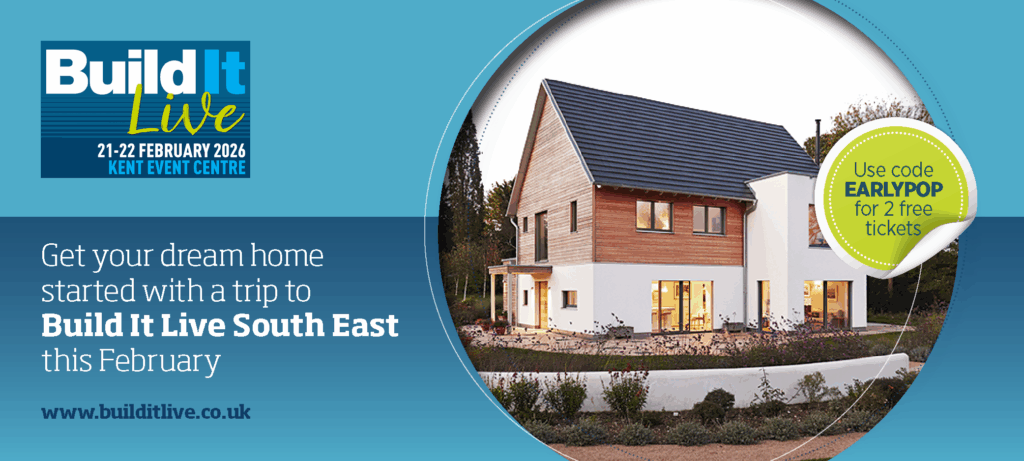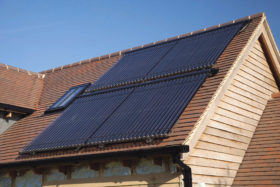
21st-22nd February 2026 - time to get your dream home started!
BOOK HERE
21st-22nd February 2026 - time to get your dream home started!
BOOK HEREWhen it comes to efficient lighting, LEDs (Light Emitting Diodes) are leading the way for self builders and renovators.
They can be 75% to 90% more efficient than the old incandescent bulbs – and even beat the latest compact fluorescents (CFLs). And they offer much more than savings on your electricity bill. LEDs are dimmable, quick to reach full intensity, deal better with repeated switching and have a long lifespan (over 35,000 hours).
They also come in handy when it comes to meeting Building Regulations, which recommend that at least 75% of a new home’s internal light fittings (not just the bulb) should be high efficiency. Many local authorities set this out as a prerequisite for your approval to build.
An efficient light fitting is one that produces over 45 lumens (a measure of visible light) per circuit-watt. That rules out traditional fittings, halogens and incandescent bulbs as energy-saving options. So most homeowners, choose between CFLs and LEDs; and the latter are gaining in popularity.
The small size of LEDs comes in handy for creating good lighting schemes. They can adapt to suit any application, from background illumination to accent and task lighting. You might hang ceiling pendants fitted with LED bulbs in the sitting room, for example, or run a series of wall-hung uplighters – and most options are dimmable (only top-of-the-range CFLs can be dimmed).
In kitchens and bathrooms, the trend for downlighters is still strong – and LEDs are a great option here, too. They offer better efficiency than halogens and don’t suffer from the lifespan issues that can afflict ‘canned’ CFLs.
And why not create a feature of an attractive cabinet by running strip lighting under the shelves? The same trick works well under wall-mounted kitchen units to illuminate the worksurface, or to provide accent lighting beneath shadow-gap fitted cupboards. LEDs produce barely any heat (concentrating the energy into light instead) so there’s no fire risk. For an ultra-stylish safety feature, try integrating LEDs into stair treads.
We’ve long been trained to look at wattage when it comes to choosing bulbs – 40W or 60W versions being the norm in most living areas. But the phase-out of inefficient incandescents over the past few years, and proliferation of alternatives, means you need to focus on other factors when selecting and comparing products.
The most important of these is the lumen output. A 60W incandescent produces around 750 lumens (this can vary). To match that output, you’re likely to need a 12W LED bulb.
If you want to get technical, you can look in detail at other elements of the specification. The colour rendering index (CRI) is scored out of 100 and indicates how natural a light is cast by a bulb (90-plus is ideal for LEDs). The correlated colour temperature (CCT) reflects the ‘warmth’ of the light – high numbers are cool (good for task lighting), low numbers are warm (good for ambience).
The best way to find out what suits your home is to try a bulb or two for a few weeks and see how you get on with it. But remember that high-quality in both the fittings and LEDs are a must for good colour consistency.
Prices for LED bulbs and fittings are dropping continually, but they’ll still cost you more up front than traditional options.
You can find 8W E27 LED bulbs (screw-ins that will match conventional fittings) for £13, for instance. An 11W compact fluorescent would offer similar lumen output (around 600) at a cost of just £2 or £3.
Nevertheless, the advantages of LEDs just can’t be ignored – you’ll save money in use, get more life out of them (so you need to replace them much less) and they’re perfect for creating the kind of layered, well-structured lighting schemes that self builders love.
Main image: This open-plan kitchen features a layered LED lighting scheme designed by John Cullen Lighting

Comments are closed.